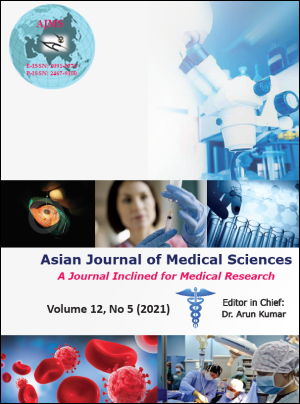Auditory Hallucinations: A Phenomenological Study
Keywords:
Auditory hallucinations, Schizophrenia spectrum disordersAbstract
Background: Auditory hallucinations are common feature in psychotic disorder and have also given diagnostic importance. These hallucinations can be rated on different dimensions both quantitatively and qualitatively, so here comes phenomenological aspect. Study of phenomenological aspects may lead to more understanding about them and further can help in management of distressing auditory hallucinations.
Aims and Objectives: The aims and objectives of the current study was as follows- 1. To explore the phenomenology of auditory hallucination in schizophrenia spectrum disorder. 2. To find out clinical correlation of auditory hallucination with other psychotic symptoms. 3. To find out factor structure of PSYRATS (Psychotic Symptom Rating Scale) and their correlation with PANSS and its subscales.
Materials and Methods: One hundred patients, who had schizophrenia spectrum diagnoses attending general hospital psychiatry unit in India having auditory verbal hallucination (AVH) in last seven days were studied. Phenomenology was assessed by using Psychotic Symptoms Rating Scale (PSYRATS) and Positive and Negative Syndrome Scale (PANSS). Pearson correlation for the psychotic symptoms, Dimensions of psychotic symptoms on PSYRATS were explored by principal component analysis.
Results: In study 82% patients had schizophrenia. More than one third patients heard voices continuously, in more than two-third patients voices were coming from outside head only, had no control over them, and had same loudness as one’s own voice. One third patients had AVH (Auditory Verbal Hallucinations) with all negative content, 19% had AVH commanding nature. 79% had delusions, 96% had hallucinatory behavior. Bipolar index showed dominance of positive symptoms. 80% reported depression. On principal component analysis three factors found, all three factors were positively correlated with positive subscale and total PANSS score. None of three factors were correlated with negative subscale of PANSS.
Conclusion: In this study of AVH phenomenology among schizophrenia spectrum disorders, most dimensions of AVH correlated well with one another. On principal component analysis three factor structure of PSYRATS was found.
Downloads
Downloads
Published
How to Cite
Issue
Section
License
Authors who publish with this journal agree to the following terms:
- The journal holds copyright and publishes the work under a Creative Commons CC-BY-NC license that permits use, distribution and reprduction in any medium, provided the original work is properly cited and is not used for commercial purposes. The journal should be recognised as the original publisher of this work.
- Authors are able to enter into separate, additional contractual arrangements for the non-exclusive distribution of the journal's published version of the work (e.g., post it to an institutional repository or publish it in a book), with an acknowledgement of its initial publication in this journal.
- Authors are permitted and encouraged to post their work online (e.g., in institutional repositories or on their website) prior to and during the submission process, as it can lead to productive exchanges, as well as earlier and greater citation of published work (See The Effect of Open Access).




